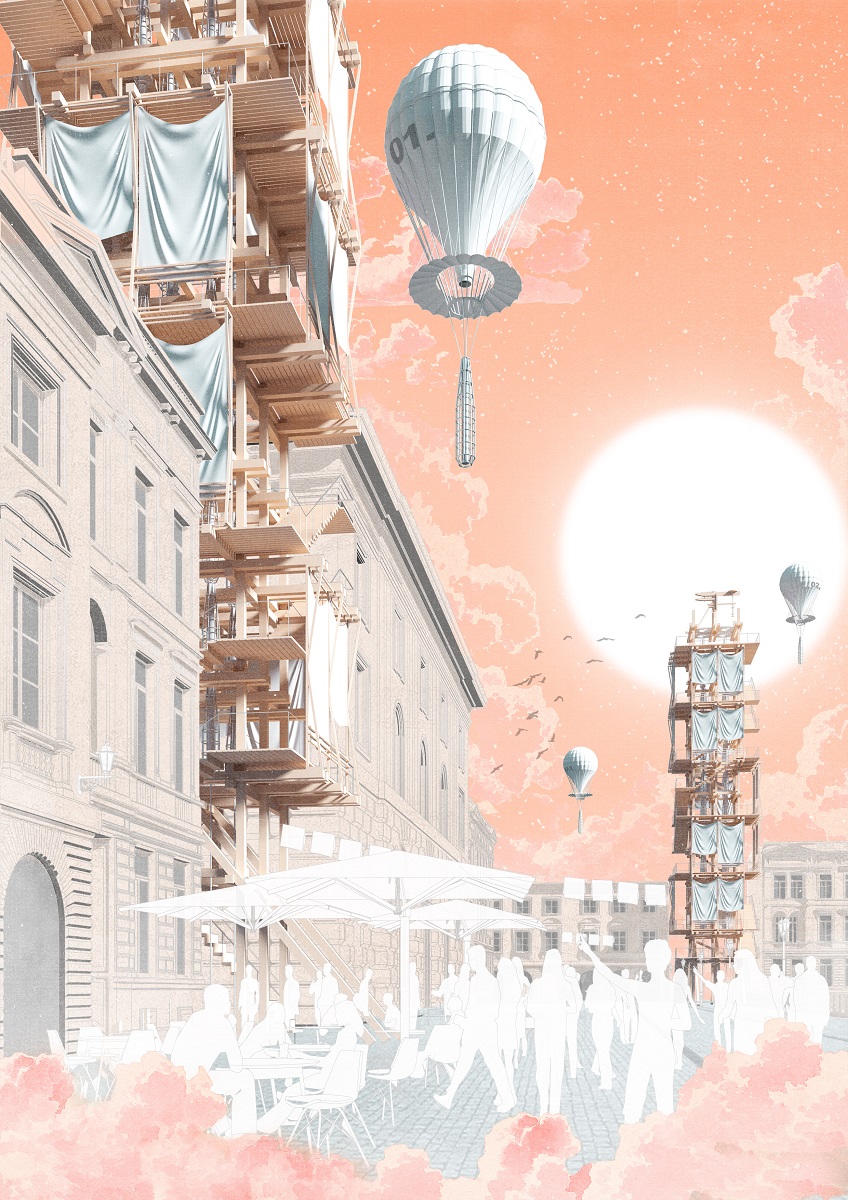Announcement
Re-Nature Rome aimed to answer those questions with a particular focus on biodiversity in urban areas.
Our world is changing fast, while ambitions and challenges match in importance. In this context, design can play a huge role. How do we imagine the world to be? What range of possibilities we haven’t discovered yet? What’s a Non Architecture for a World in crisis? In 2020 we started the second phase of competitions to address the issues of tomorrow.
In line with our style we propose 9+1 themes – ten critical topics to work on, but this time they come with a framework to make sure that each theme is explored from different design angles. Rather than a program, a research ecosystem composed of various competitions running in parallel and exploring the same theme from different perspectives.
Our exploration journey continues here, with theme three: INTO THE WILD.
In this competition, we encouraged participants to come up with visionary concepts to reinvent an urban hotspot for biodiversity, within and beyond urban parks – only 2 drawings, absolute freedom of scale, or program. Participants were asked to imagine a new urban model, to promote biodiversity into the specific context of the city of Rome, Italy. Submissions could be ideas for new green infrastructure, parks, green buildings, or any kind of strategy that would boost biodiversity while enhancing the urban experience of a historical city such as Rome.
Increasing biodiversity of urban areas requires a great creative effort, trying to find quality in linking nature and the city. Solutions could be focusing on architectural aspects, green urban systems, parks, public space, and the cityscape as a whole. Natural hotspots serve both citizens and biodiversity. On one hand, they can improve air quality, provide quality public space and generate a unique urban experience. On the other, they can create green links, protect different habitats and restore ecosystems for endangered species.
Re-Nature Rome is part of the “Cities of Tomorrow” competition series, developed to reimagine urban life through a variety of creative design concepts and ideas. What kind of role can we play as designers in reimagining urban life? How can we produce new inspiring visions to trigger a discussion around alternative models of living?
Explore the entire result on the competition WEBSITE.
Winner_ 1_ Pegmata
Bennet Harvey, Jonathan Robitaille, Tim Schmidt
Institution / Company: Carleton University

Pegmata is a series of framed wooden towers placed throughout Rome. Each structure contains a seed dispersion mechanism; using mobile balloons and a Brunelleschi-inspired lift system to store and scatter seeds throughout the city. This encourages green spaces to flourish and increases biodiversity through precision seasonal seeding.
The towers reference the scaffolding of roman antiquity, complementing the classical skyline rather than disrupting it. They form a transparent addition that reflects the beauty of Rome rather than challenging it. Occupying a virtually non-existent footprint, the towers allow traffic to go throughout their bases, enabling them to be inserted in a variety of novel locations.

Each tower aims to become a transformable community center, where residents operate and maintain the tower while benefiting from the views and space it provides. Over time, as each tower is adapted to their community, they take on the life and culture of their neighborhoods, developing into markets, gardens, or any other space. As the age of the structure, they will quickly become homes to a variety of wildlife, hosting birds, insects, and plant life.
Pegmata is a zero-footprint, sustainable biodiversity program that brings together communities while acknowledging and participating in the identity of Rome.
Sources & Credits
Non Architecture
Save